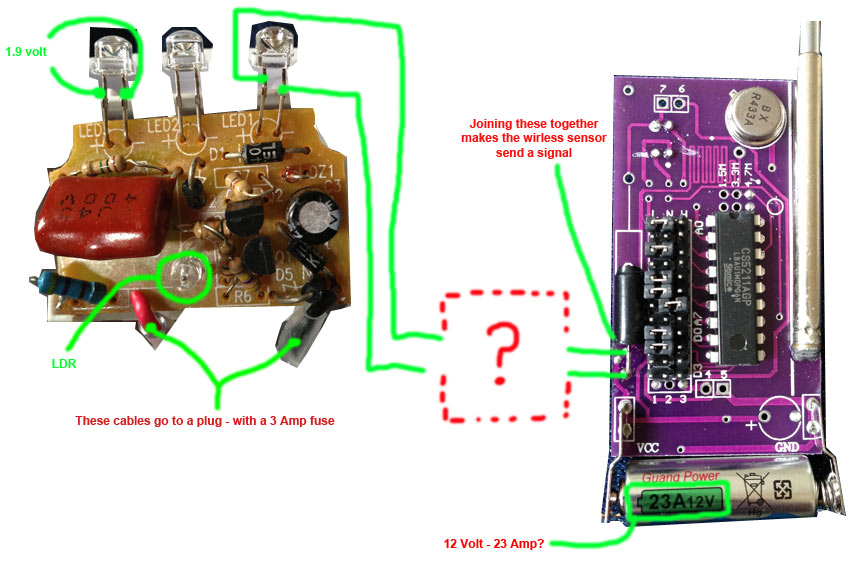itsallgood
Member level 2

Hi guys,
I've got a night light - that powers a 2 volt LED - when it gets dark.
I've got a 12 volt wireless alarm sender.
What I want to do - is join them together. So instead of making the led light up - it allows the 12v alarm sender to send a signal to the alarm box.
From looking around - I think I need a relay?
But I don't understand how to make it work from 2volts.
Could anyone share a simple diagram, and maybe a parts list
Thanks so much!!!
I've got a night light - that powers a 2 volt LED - when it gets dark.
I've got a 12 volt wireless alarm sender.
What I want to do - is join them together. So instead of making the led light up - it allows the 12v alarm sender to send a signal to the alarm box.
From looking around - I think I need a relay?
But I don't understand how to make it work from 2volts.
Could anyone share a simple diagram, and maybe a parts list
Thanks so much!!!



